All Quiet on the Western Front (1930)
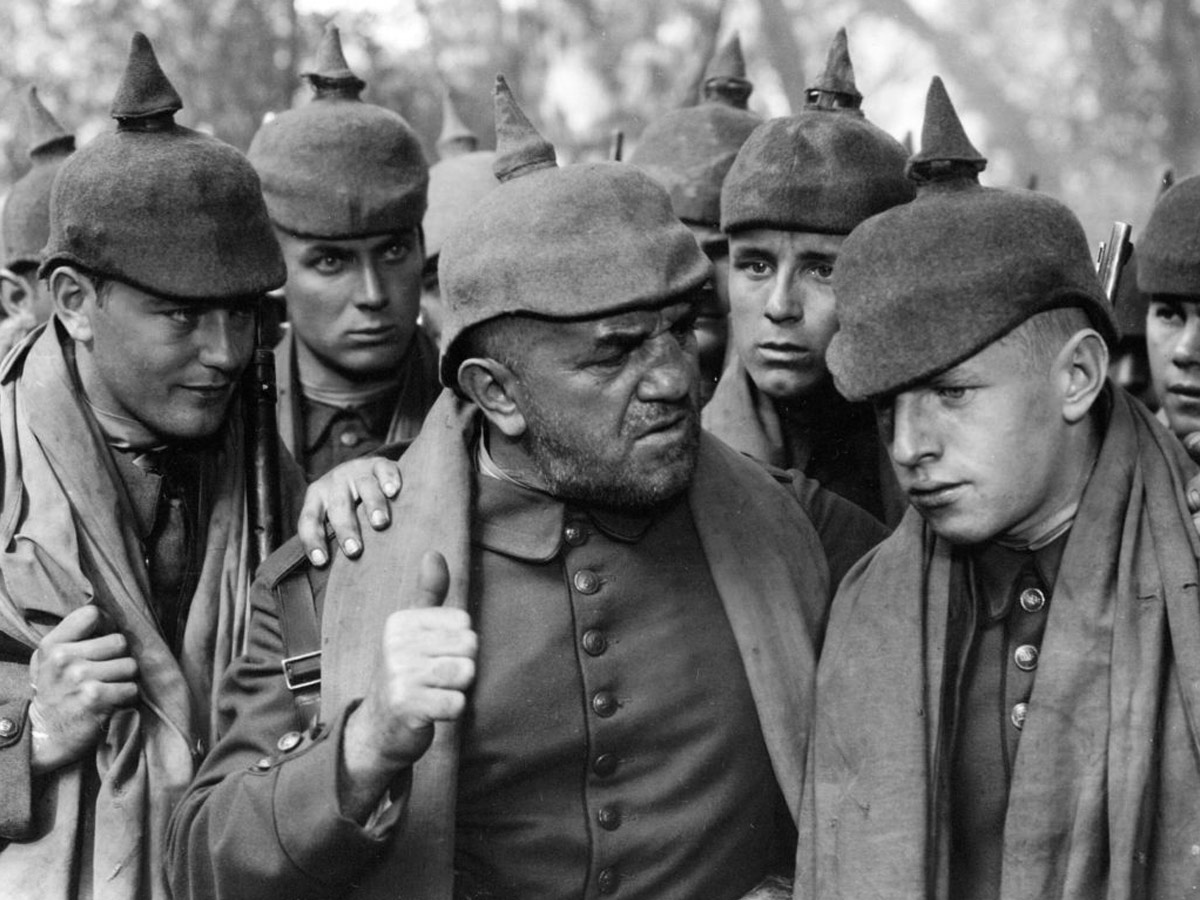
- War Depicted: World War II
- Director: Lewis Milestone
- Actors: Lew Ayres, Louis Wolheim
All Quiet on the Western Front is a landmark in cinema history, being one of the first films to depict the grim realities of war from the perspective of ordinary soldiers. Directed by Lewis Milestone, it won the Academy Award for Best Picture and Best Director, making it first film to achieve this feat. The film is based on Erich Maria Remarque's novel, which itself was a bestseller and a poignant anti-war statement. The movie's realistic portrayal of trench warfare, innovative use of sound, and groundbreaking special effects set new standards for war films. All Quiet... was banned in several countries, including Nazi Germany, for its anti-war message. The performances, particularly by lead actor Lew Ayres, were lauded for their emotional depth and authenticity. The film's influence extends beyond its era, as it continues to be studied in film schools today.
Battle of the Bulge (1965)
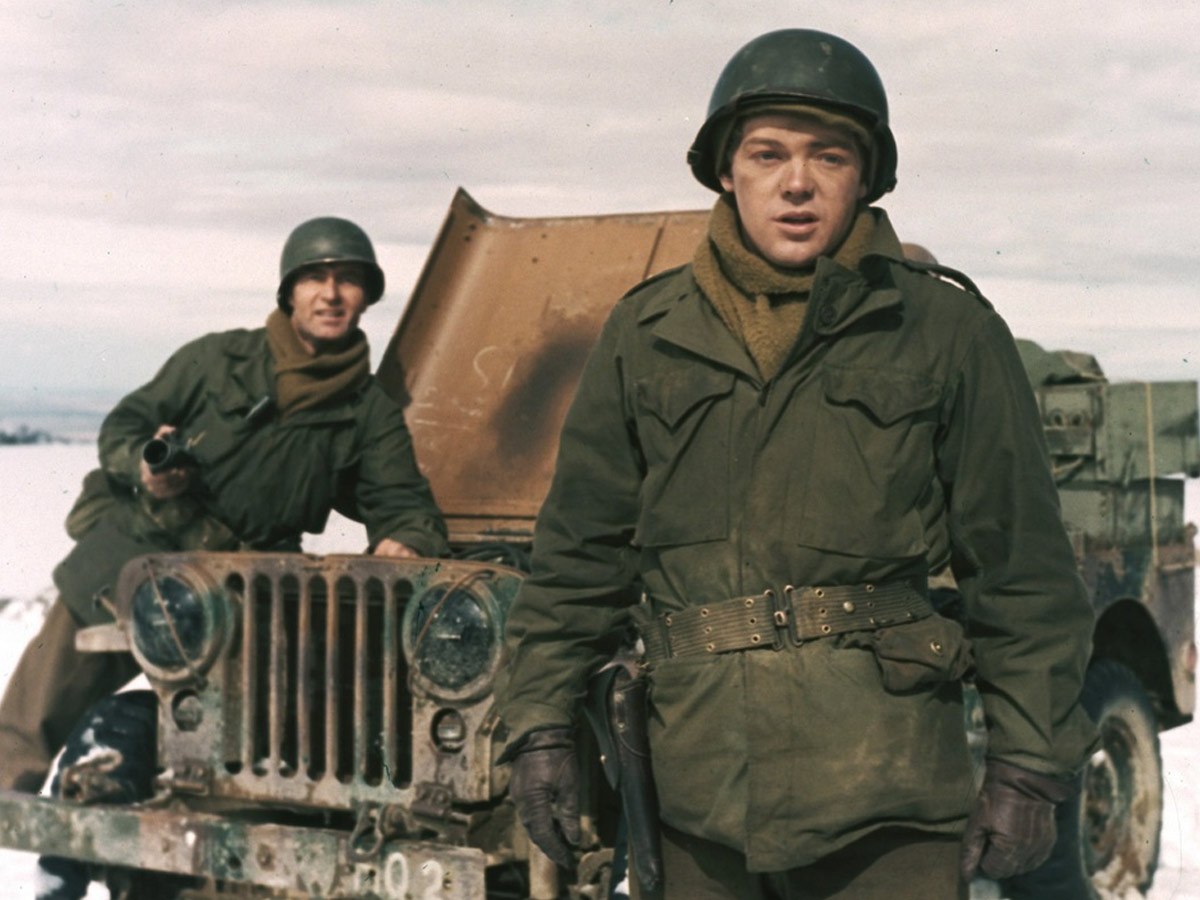
- War Depicted: World War II
- Director: Ken Annakin
- Actors: Henry Fonda, Robert Shaw, Robert Ryan
Battle of the Bulge dramatizes the last major German offensive on the Western Front during World War II. The film features an ensemble cast including Henry Fonda, Robert Shaw, and Telly Savalas. It was shot in Ultra Panavision 70, providing a wide, immersive visual experience that was rare for its time. The film's production involved extensive use of real military equipment, including authentic tanks and vehicles. Despite some historical inaccuracies, it captures the strategic and tactical elements of the battle, emphasizing the high stakes and intense combat situations.
A Bridge Too Far (1977)
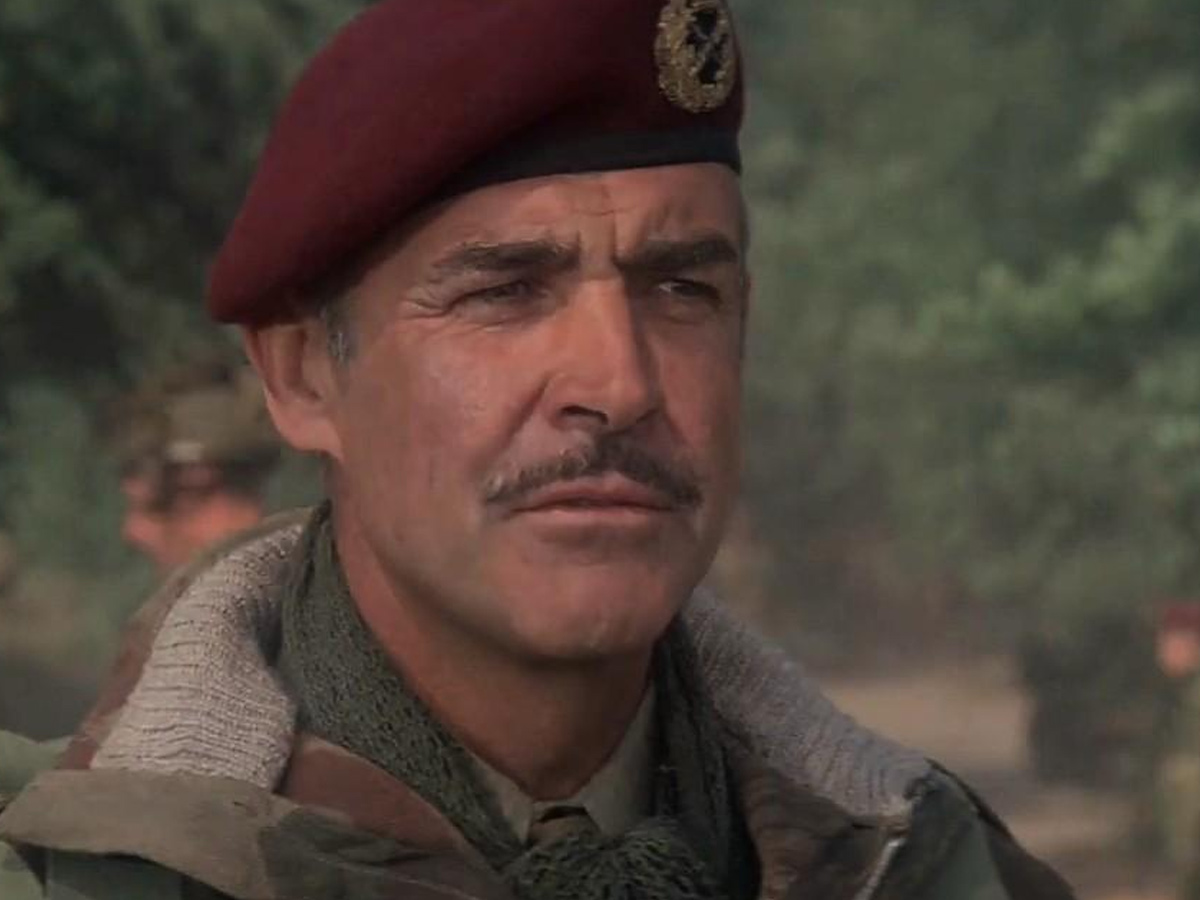
- War Depicted: World War II
- Director: Richard Attenborough
- Actors: Sean Connery, Ryan O'Neal, Michael Caine
A Bridge Too Far is based on the 1974 book by Cornelius Ryan. The movie recreates Operation Market Garden, an ambitious World War II mission aimed at capturing key bridges in the Netherlands to expedite the Allied advance into Germany. The film boasts an ensemble cast featuring Sean Connery, Michael Caine, Anthony Hopkins, and Robert Redford, among others, making it one of the most star-studded war films of its time. It was shot on location in the Netherlands. The production involved extensive use of military equipment, including real tanks and aircraft, to enhance realism. The film's attention to detail in portraying the complexities and eventual failure of the operation provides a nuanced perspective on military strategy and human error.
The Eagle Has Landed (1976)
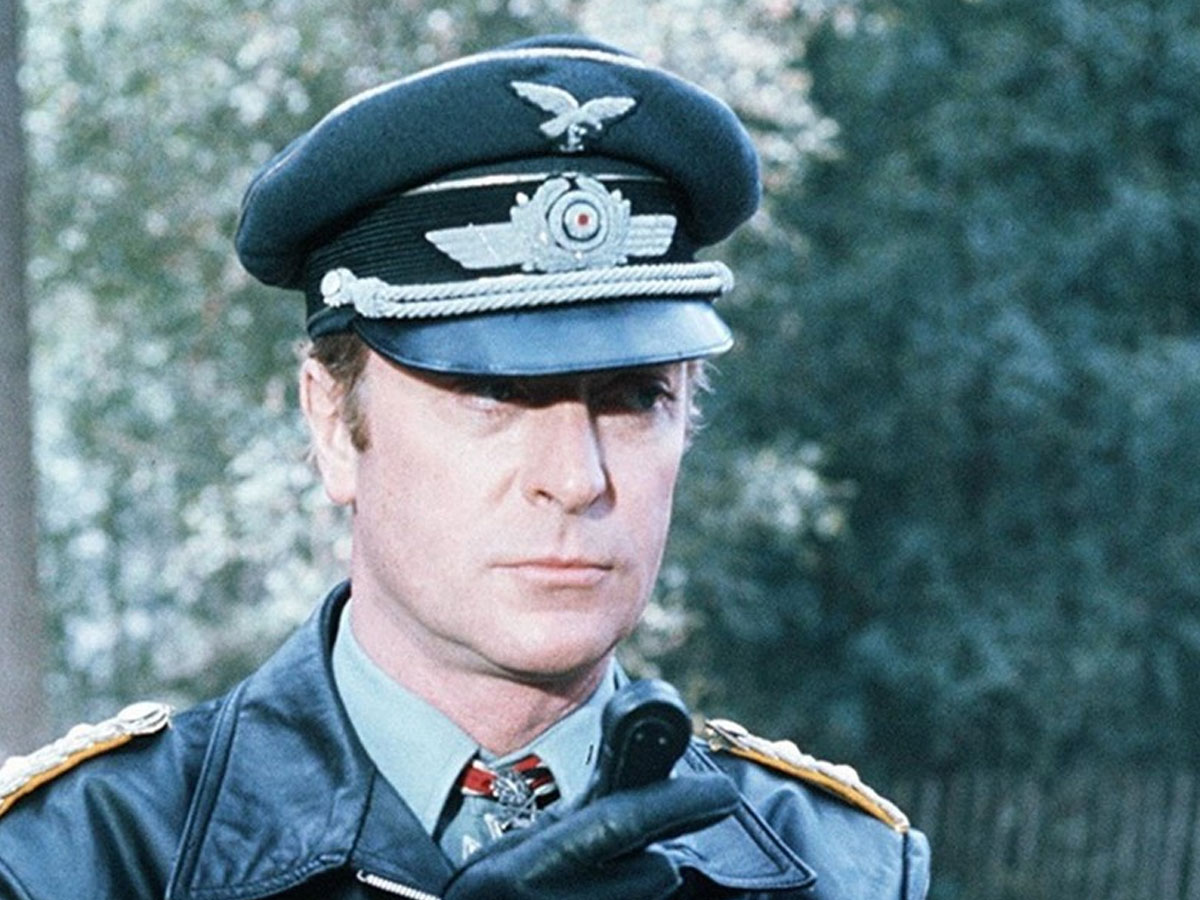
- War Depicted: World War II
- Director: John Sturges
- Actors: Michael Caine, Donald Sutherland, Robert Duvall
The Eagle Has Landed was directed by John Sturges in his final film. The movie is based on Jack Higgins' best-selling novel and revolves around a fictional Nazi plot to kidnap Winston Churchill during World War II. The ensemble cast includes Michael Caine, Donald Sutherland, and Robert Duvall, each delivering strong performances. The film's blend of suspense, action, and historical intrigue makes it a distinctive entry in the war genre. Its exploration of moral ambiguity and the human side of soldiers on both sides of the conflict make it a thought-provoking watch.
Greyhound (2020)
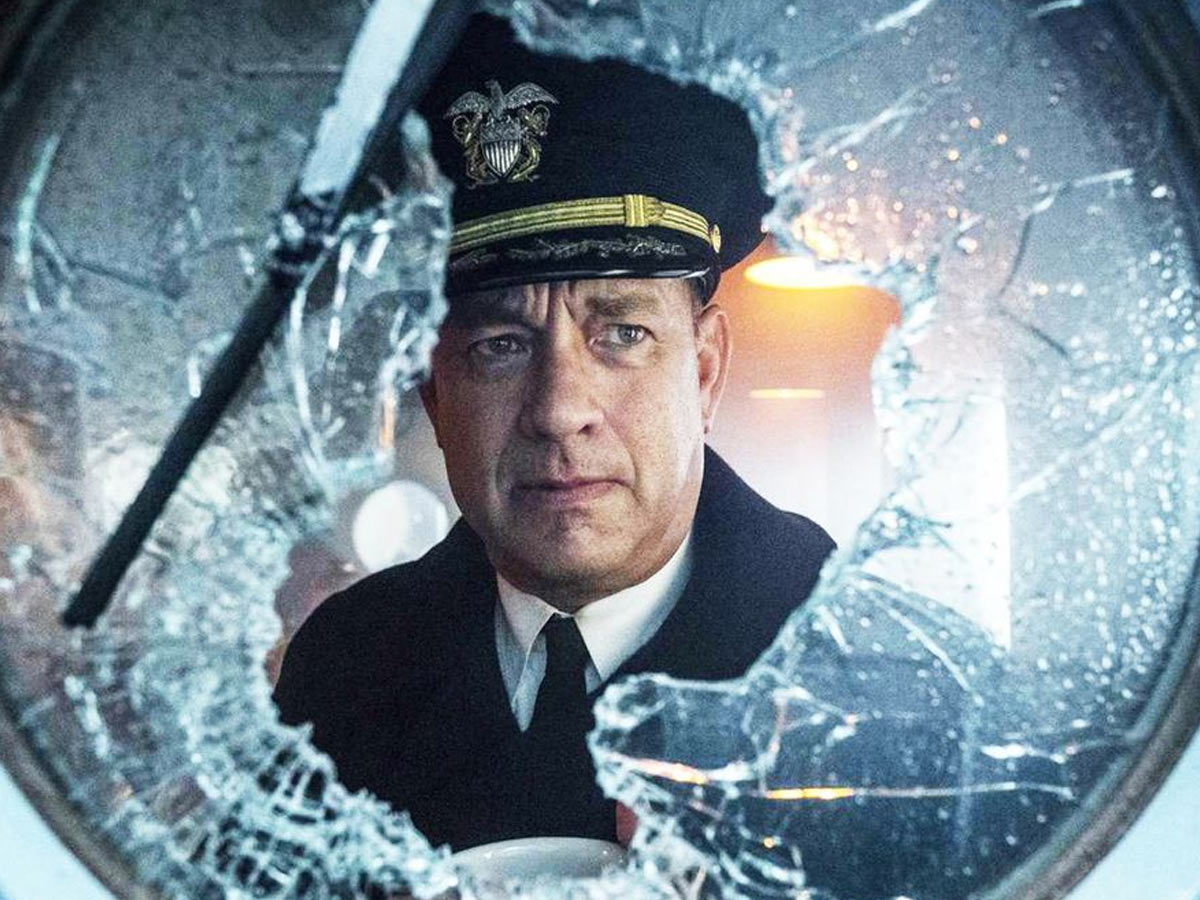
- War Depicted: World War II
- Director: Aaron Schneider
- Actors: Tom Hanks, Stephen Graham, Rob Morgan
Greyhound is based on C.S. Forester's 1955 novel The Good Shepherd. The movie offers a gripping portrayal of the Battle of the Atlantic during World War II. Tom Hanks not only stars as Commander Ernest Krause but also wrote the screenplay. The film's intense visual effects of naval warfare create a visceral experience that immerses viewers in the relentless tension of convoy escort missions. Additionally, Greyhound was praised for its sound design, which plays a crucial role in conveying the chaos and urgency of battle. Released on Apple TV+ during the COVID-19 pandemic, it became one of the then-fledgling platform's most-watched films.
The Hunt for Red October (1990)
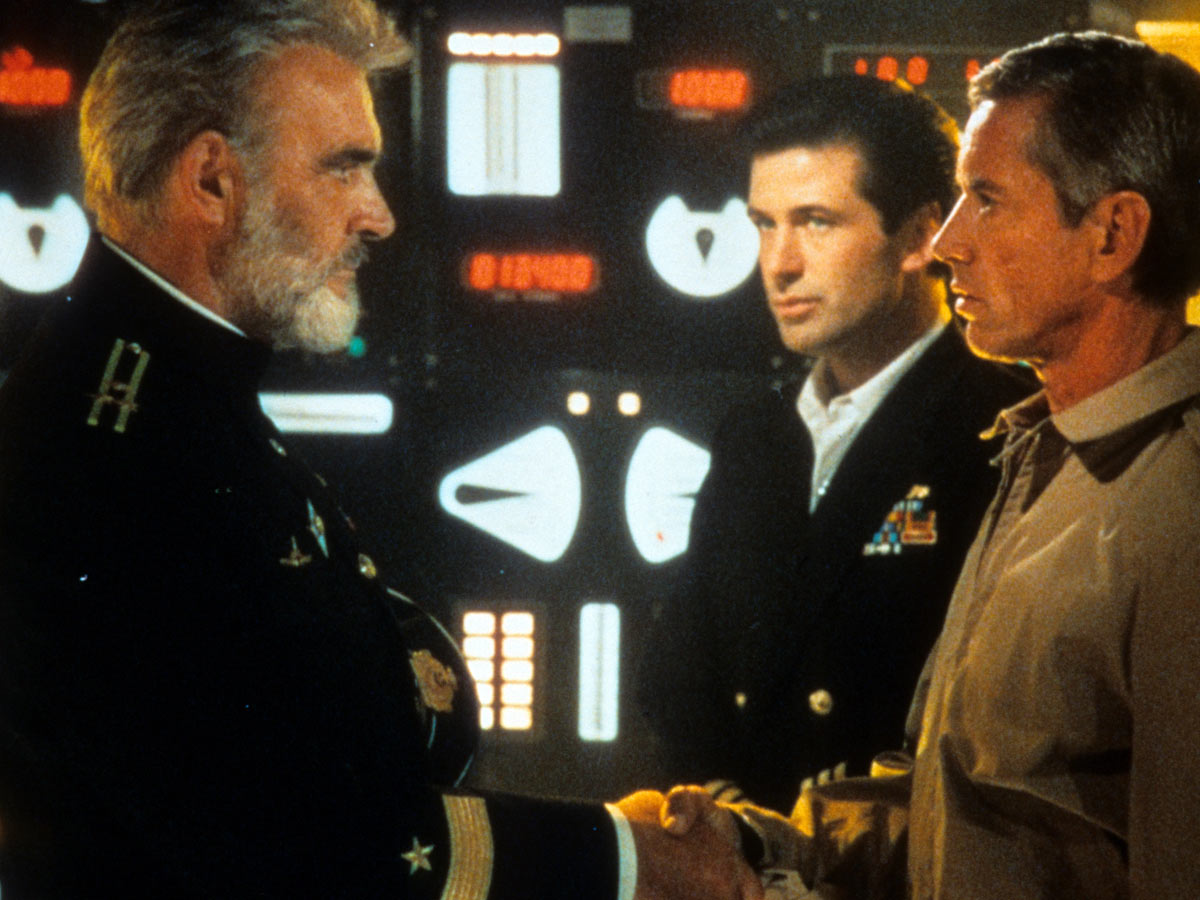
- War Depicted: Cold War
- Director: John McTiernan
- Actors: Sean Connery, Alec Baldwin, Scott Glenn
The Hunt for Red October is based on Tom Clancy's best-selling novel. The film features a gripping Cold War narrative centered around a Soviet submarine captain, played by Sean Connery, who plans to defect to the United States with a cutting-edge nuclear submarine. The movie's technical accuracy in depicting naval warfare and submarine operations was praised by military experts, adding a layer of authenticity rarely seen in Hollywood productions. The film's tension is heightened by its use of real-life naval tactics and the geopolitical stakes of the Cold War era. Alec Baldwin's portrayal of CIA analyst Jack Ryan introduced a character that would become a popular franchise player in American cinema and television. The underwater special effects sequences were groundbreaking at the time.
The Dirty Dozen (1967)

- War Depicted: World War II
- Director: Robert Aldrich
- Actors: Lee Marvin, Ernest Borgnine, Charles Bronson
The Dirty Dozen is a seminal war film based on E.M. Nathanson's novel. The story was inspired by a real-life group of convicts who were offered commuted sentences in exchange for undertaking a dangerous mission during World War II. The movie's plot centers around a group of twelve military prisoners who are trained to assassinate German officers, a premise that was controversial. Its blend of action, dark humor, and moral ambiguity challenged traditional war film narratives, making it a precursor to more modern, complex war movies. The film found success not just with movie critics but also with commercial audiences, grossing over $45 million, a significant sum for its era. It received four Academy Award nominations, winning for Best Sound Effects. The film's influence extends beyond cinema, impacting popular culture and even inspiring a TV series and several sequels.
The Longest Day (1962)

- War Depicted: World War II
- Director: Ken Annakin, Andrew Marton, Bernhard Wicki
- Actors: John Wayne, Robert Ryan, Richard Burton
The Longest Day depicts the D-Day landings of June 6, 1944, and features an ensemble cast of over 40 international stars. It was shot in black and white to match the newsreel footage of the era. The film uses multiple languages, with characters speaking English, German, and French, reflecting the multinational nature of the conflict. Directed by a team of five directors, the film's D-Day focus is based on Cornelius Ryan's carefully researched book of the same name. The Longest Day won two Academy Awards, including Best Cinematography, and was nominated for three others.
The Sand Pebbles (1966)

- War Depicted: Chinese Civil War
- Director: Robert Wise
- Actors: Steve McQueen, Richard Attenborough, Richard Crenna
The Sand Pebbles is a war film featuring Steve McQueen in one of his most acclaimed roles, earning him an Academy Award nomination for Best Actor. The film is set during the 1920s on a U.S. Navy gunboat in China, providing a unique historical context that diverges from the more commonly depicted World War I and II settings. It was based on the novel by Richard McKenna, who drew from his own experiences in the Navy. The production was ambitious, with extensive on-location shooting in Taiwan, which was rare for the time and added to the film's realism. The movie also addresses complex themes such as imperialism, cultural conflict, and the moral ambiguities of war. In total The Sand Pebbles was nominated for eight Academy Awards, including Best Picture.
Tora! Tora! Tora! (1970)
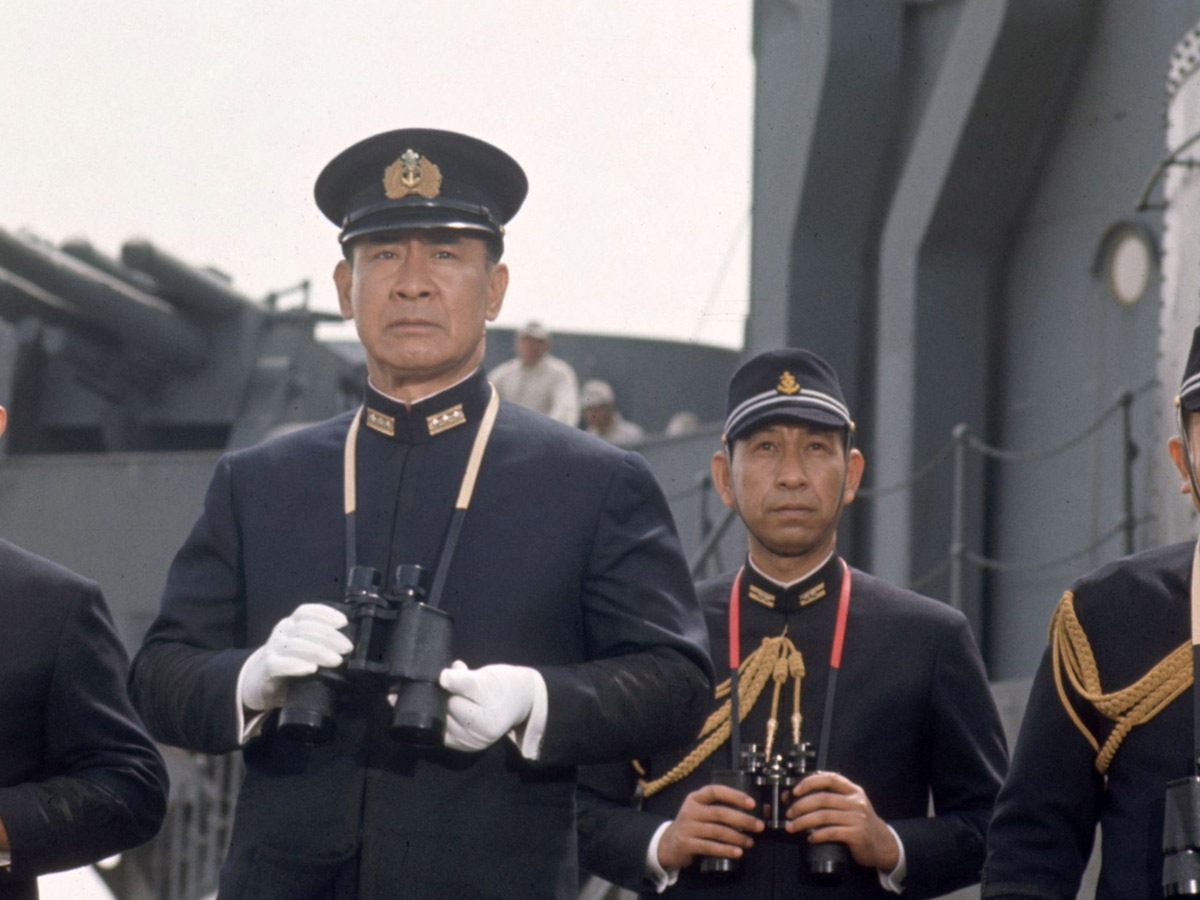
- War Depicted: World War II
- Director: Richard Fleischer, Kinji Fukasaku, Toshio Masuda
- Actors: Martin Balsam, Sô Yamamura, Jason Robards
Tora! Tora! Tora! is a meticulously crafted war film that offers a balanced and detailed portrayal of the events leading up to the attack on Pearl Harbor. The film is unique in its collaborative production between American and Japanese filmmakers, with directors Richard Fleischer, Kinji Fukasaku, and Toshio Masuda each handling their respective country's perspective. This dual viewpoint makes it a rare example of a war movie that strives for historical accuracy from both sides of the conflict. The film's title, "Tora! Tora! Tora!" is derived from the Japanese codeword used to indicate that complete surprise had been achieved in the attack. The production was notable for its use of real military equipment and locations, including actual ships and aircraft. The special effects, particularly the recreation of the attack on Pearl Harbor, were groundbreaking for their time and earned the film an Academy Award for Best Visual Effects.
In Harm's Way (1965)
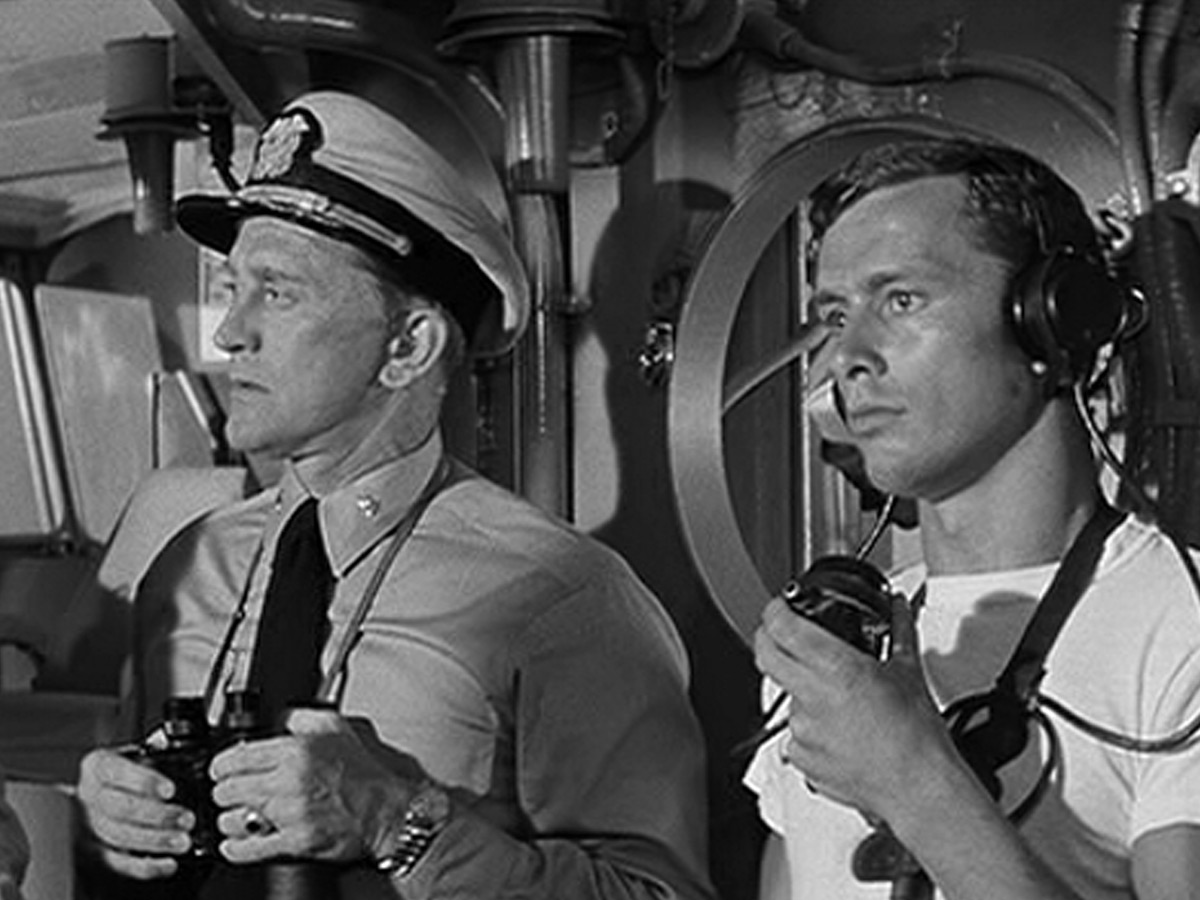
- War Depicted: World War II
- Director: Otto Preminger
- Actors: John Wayne, Kirk Douglas, Patricia Neal
In Harm's Way features an ensemble cast led by John Wayne, Kirk Douglas, and Patricia Neal, bringing together some of Hollywood's most notable actors. The film is based on the novel by James Bassett about WWII naval warfare. It was one of the last major black-and-white films of its era, adding a stark, dramatic visual style to the film. The movie's special effects, particularly the naval battle scenes, were groundbreaking for their time and received an Academy Award nomination.
Crimson Tide (1995)
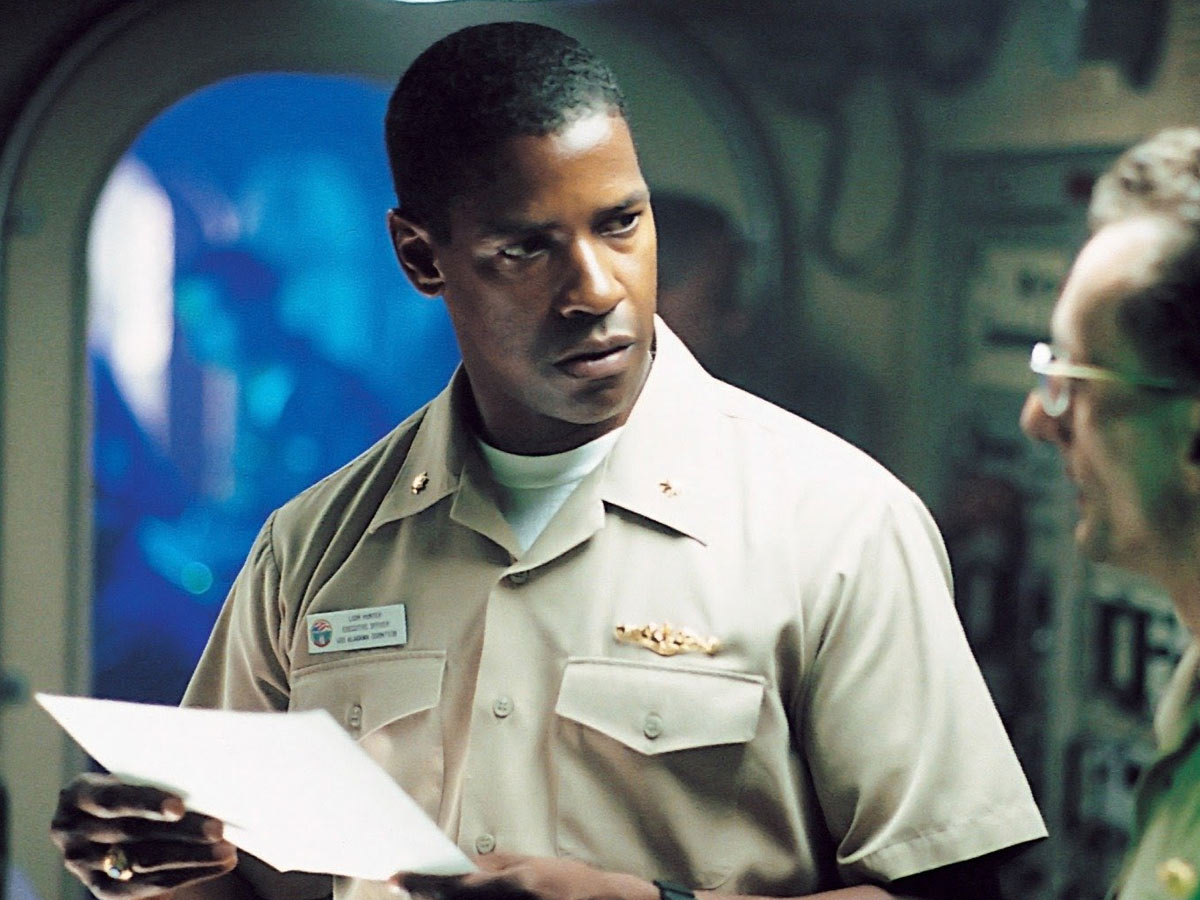
- War Depicted: Fictional Post-Cold War
- Director: Tony Scott
- Actors: Denzel Washington, Gene Hackman, Matt Craven
Crimson Tide stands out due to its intense portrayal of a nuclear submarine standoff during a period of political instability. The film features powerhouse performances by Denzel Washington and Gene Hackman, whose on-screen conflict drives the narrative. The screenplay, which received uncredited rewrites from Quentin Tarantino, adds layers of tension and depth to the dialogue. Hans Zimmer's score, which won a Grammy Award, enhances the film's suspenseful atmosphere. Crimson Tide's critical and commercial success, along with its enduring relevance, solidifies its place among the greatest war movies.
Valkyrie (2008)

- War Depicted: World War II
- Director: Bryan Singer
- Actors: Tom Cruise, Kenneth Branagh, Bill Nighy
Valkyrie is a historical thriller following Colonel Claus von Stauffenberg, a key figure in the real-life July 20, 1944, plot to assassinate Adolf Hitler. The film has many scenes shot at actual locations in Germany, including the Bendlerblock, where the conspirators were executed. The production team consulted with historians and surviving relatives of the plotters to ensure accuracy. The film's cast includes a strong ensemble of British and German actors, such as Kenneth Branagh, Bill Nighy, and Thomas Kretschmann. Valkyrie stands out for its focus on the moral complexities and internal conflicts faced by the conspirators, offering a nuanced perspective on World War II that goes beyond the typical battlefield narrative. It's also unique as an American film production focused on Germany's side of World War II. The film's tension-filled plot and historical significance highlights a lesser-known but crucial aspect of the war.
Midway (1976)
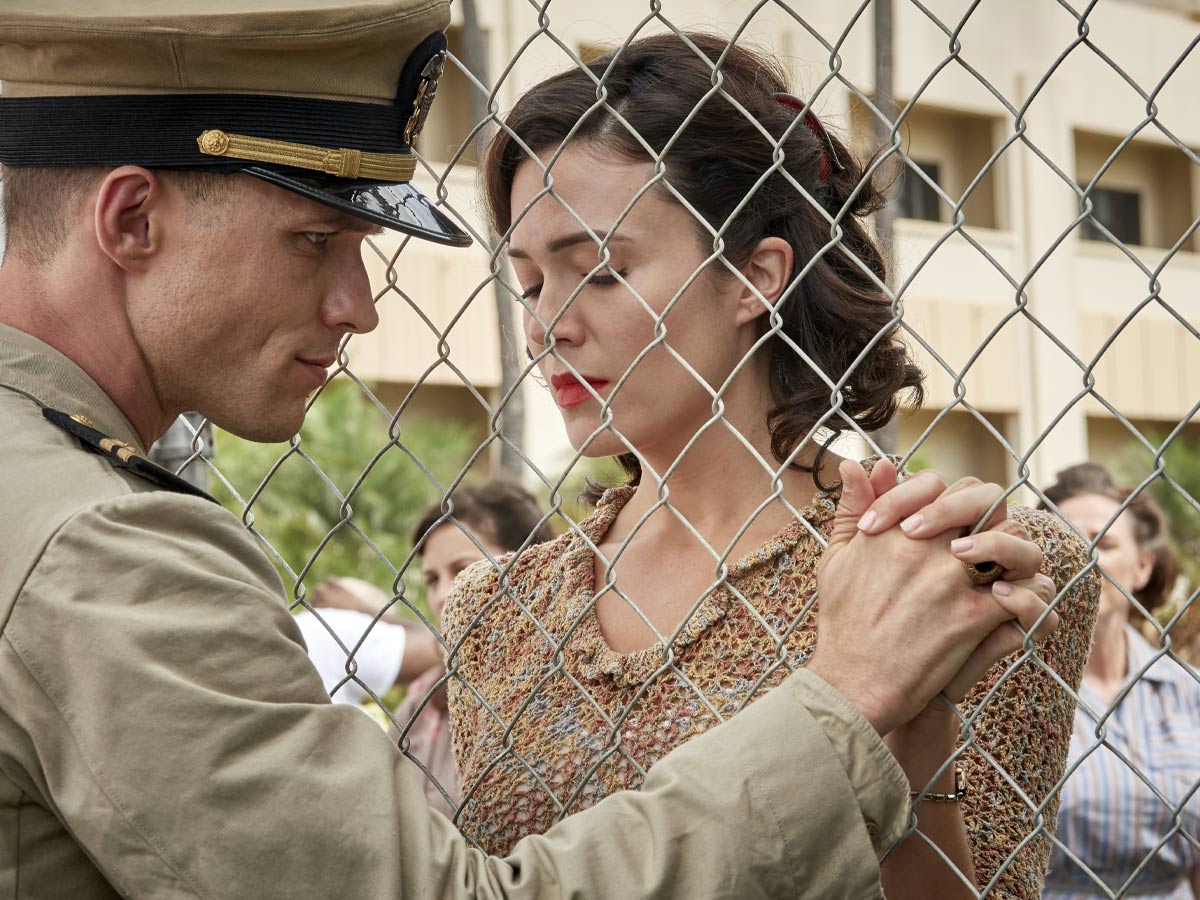
- War Depicted: World War II
- Director: Jack Smight
- Actors: Charlton Heston, Henry Fonda, James Coburn
Midway recreates the pivotal Battle of Midway, a turning point for the Allies in the Pacific Theater during World War II. The film features an ensemble cast including Charlton Heston, Henry Fonda, James Coburn, and Toshiro Mifune. It utilizes actual combat footage from World War II, lending an authentic feel to the battle scenes. Midway also benefits from the technical expertise of naval historian Walter Lord, who served as a consultant to ensure historical fidelity. A remake of the film was released in 2019, though to lesser critical acclaim.
Fury (2014)
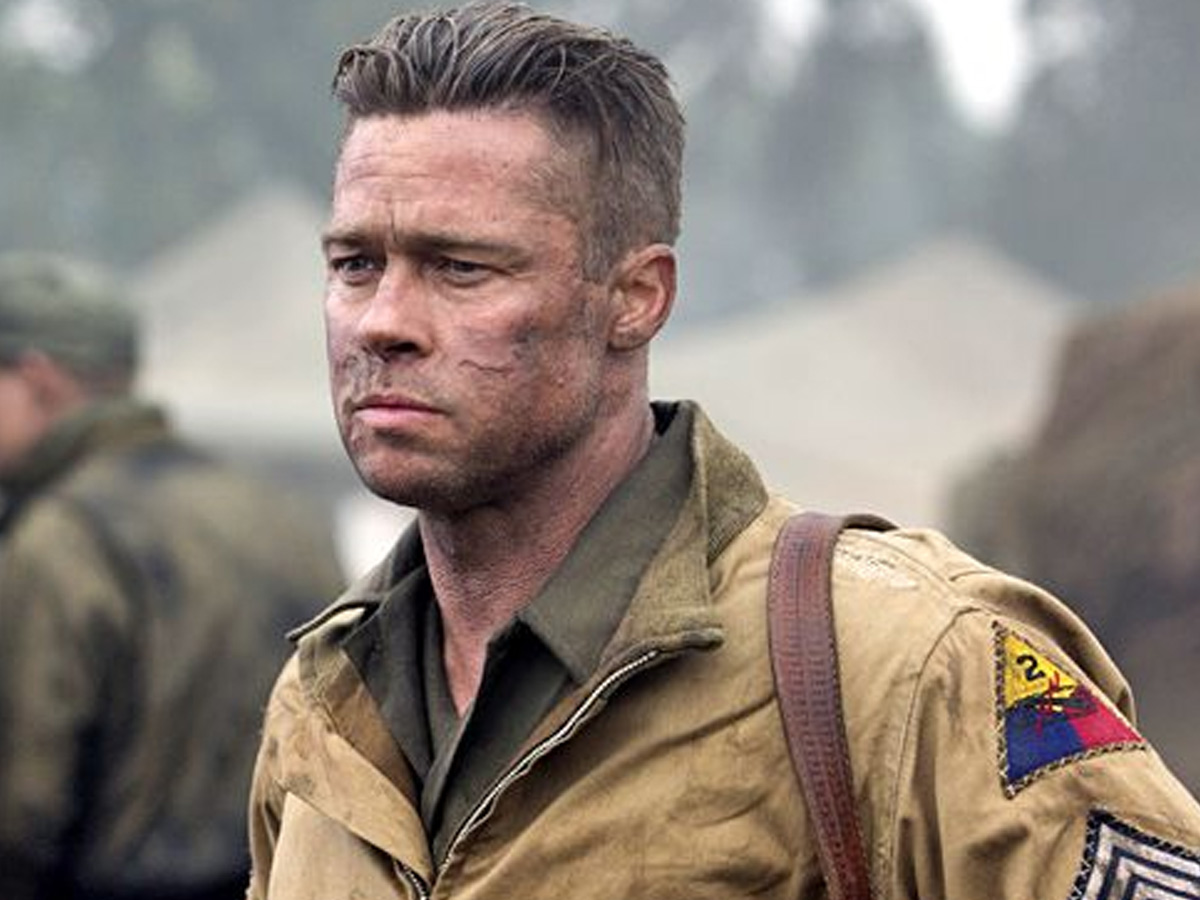
- War Depicted: World War II
- Director: David Ayer
- Actors: Brad Pitt, Shia LaBeouf, Logan Lerman
Fury features an ensemble cast led by Brad Pitt, Shia LaBeouf, Logan Lerman, Michael Peña, and Jon Bernthal, who deliver intense and authentic performances. The film is set during the final days of World War II in April 1945 and focuses on a Sherman tank crew's harrowing experiences. The production team went to great lengths to ensure historical accuracy, using real tanks, including the only operational Tiger I tank in the world, borrowed from the Bovington Tank Museum. The film's depiction of tank warfare is brutal and realistic, showcasing the claustrophobic and perilous conditions faced by tank crews. The screenplay was inspired by the experiences of Ayer's own family members who served in WWII.
Red Dawn (1984)

- War Depicted: a fictional World War III
- Director: John Milius
- Actors: Patrick Swayze, C. Thomas Howell, Lea Thompson
Red Dawn is notable for being the first film to be released with a PG-13 rating when the MPAA modified its system to include this additional intermediate rating on July 1, 1984. The movie features a young cast including Patrick Swayze, Charlie Sheen, and Jennifer Grey, who would later become prominent Hollywood stars. The film's plot, centered around a Soviet invasion of the United States and a group of teenagers who form a guerrilla resistance, was a reflection of Cold War anxieties of the time. Red Dawn was also groundbreaking in its depiction of unconventional warfare and the use of civilian resistance, themes that were relatively unexplored in mainstream cinema up to that point. The movie's portrayal of survival tactics and its intense action sequences contributed to its cult status.
We Were Soldiers (2002)

- War Depicted: Vietnam War
- Director: Randall Wallace
- Actors: Mel Gibson, Madeleine Stowe, Greg Kinnear
We Were Soldiers is a war film based on the book We Were Soldiers Once... and Young by Lieutenant General Hal Moore and war journalist Joseph L. Galloway. The film stars Mel Gibson as Lt. Gen. Hal Moore and depicts the Battle of Ia Drang, one of the first major battles between the United States Army and the North Vietnamese forces during the Vietnam War. The movie is noted for its intense and realistic portrayal of combat, capturing the chaos and brutality of war. It also emphasizes the camaraderie and leadership within the military, showcasing Moore's dedication to his men and his strategic acumen.
Charlie Wilson’s War (2007)

- War Depicted: Soviet-Afghan War
- Director: Mike Nichols
- Actors: Tom Hanks, Julia Roberts, Philip Seymour Hoffman
Charlie Wilson's War is a film based on true events, directed by Mike Nichols and written by Aaron Sorkin. It stars Tom Hanks, Julia Roberts, and Philip Seymour Hoffman, with Hoffman's performance earning him an Academy Award nomination for Best Supporting Actor. The movie chronicles the covert operations led by U.S. Congressman Charlie Wilson, who collaborated with a CIA operative to support Afghan mujahideen during the Soviet-Afghan War. This clandestine effort significantly contributed to the Soviet Union's eventual withdrawal from Afghanistan. The film is notable for its sharp dialogue (a hallmark of Sorkin's writing), political intrigue, and the way it highlights the complexities of U.S. foreign policy. It also underscores the unintended consequences of such interventions.
The Killing Fields (1984)

- War Depicted: Cambodian Civil War
- Director: Roland Joffé
- Actors: Sam Waterston, Haing S. Ngor, John Malkovich
The Killing Fields is a powerful war drama based on the true story of New York Times journalist Sydney Schanberg and his Cambodian assistant Dith Pran during the Khmer Rouge regime. The film is notable for its traumatic depiction of the Cambodian genocide, a subject rarely explored in Western cinema. Directed by Roland Joffé, it features an Oscar-winning performance by Haing S. Ngor, a real-life survivor of the Khmer Rouge, who had no prior acting experience. The Killing Fields received critical acclaim upon its release, winning three Academy Awards and eight BAFTA Awards, including Best Film. Its portrayal of human resilience and the horrors of war makes it a compelling and essential addition to any list of the greatest war movies.
Conspiracy (2001)
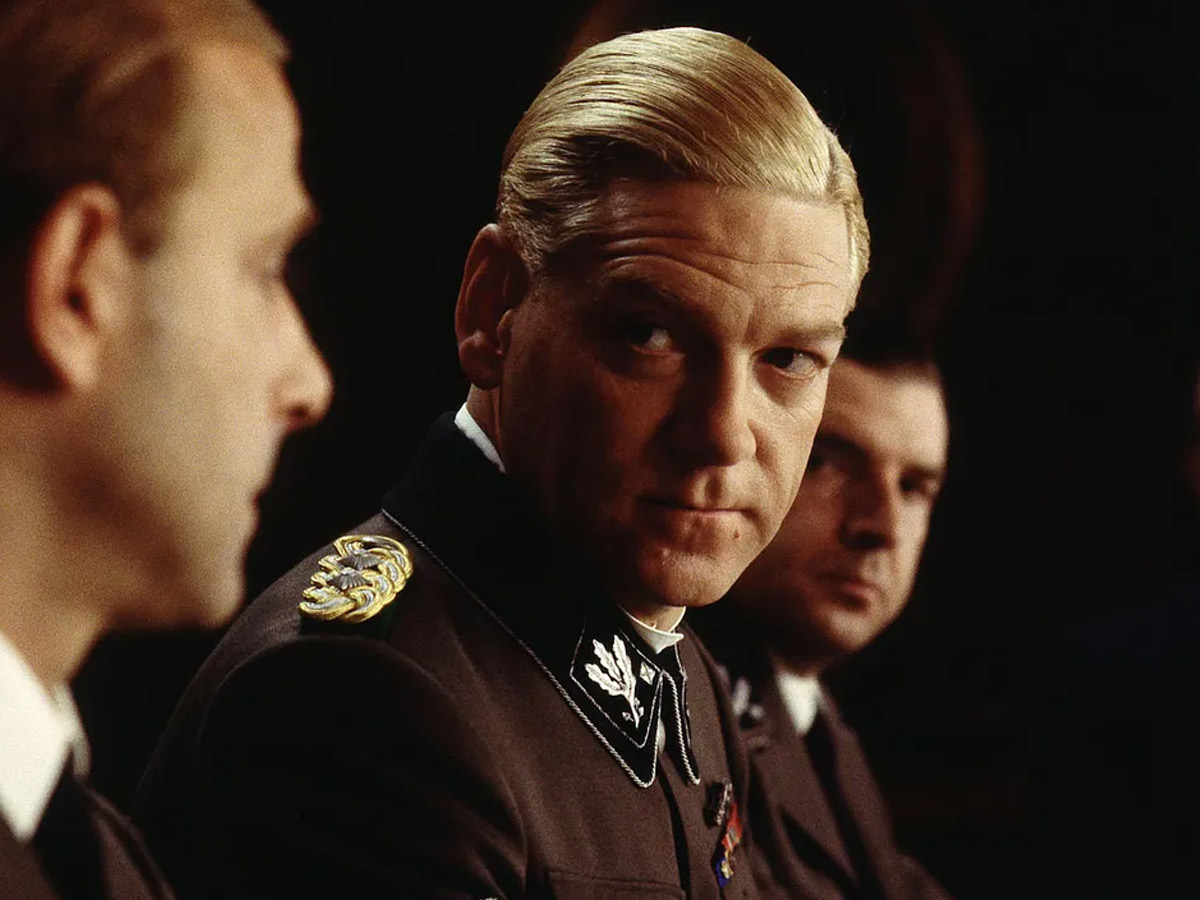
- War Depicted: World War II
- Director: Frank Pierson
- Actors: Kenneth Branagh, Stanley Tucci, Colin Firth
Conspiracy is a historical drama that recreates the infamous Wannsee Conference of 1942, where high-ranking Nazi officials discussed the implementation of the "Final Solution." The film is notable for its intense, dialogue-driven narrative, which is based on the only surviving record of the meeting, the Wannsee Protocol. Kenneth Branagh's portrayal of SS General Reinhard Heydrich earned him an Emmy Award, while Stanley Tucci's performance as Adolf Eichmann garnered a Golden Globe. Conspiracy offers a chilling insight into the bureaucratic nature of evil, making it a compelling study of how ordinary men can commit extraordinary atrocities. Its focus on the psychological and moral dimensions of war, rather than battlefield action, sets it apart from other traditional war films on this list.
The Great Escape (1963)

- War Depicted: World War II
- Director: John Sturges
- Actors: Steve McQueen, James Garner, Richard Attenborough
The Great Escape is a classic war film based on the true story of a mass escape by British Commonwealth prisoners of war from a German POW camp during World War II. Directed by John Sturges, the film features an ensemble cast including Steve McQueen, James Garner, and Richard Attenborough. The movie is renowned for its attention to historical detail, with many of the escape methods depicted being true to the actual events. Steve McQueen's motorcycle chase scene, which he performed most of the stunts for himself, has become one of the most memorable chase sequences in cinema history. The Great Escape not only provides thrilling entertainment but also serves as a tribute to the ingenuity and resilience of the Allied prisoners. It blend of suspense, action, and historical significance.
Das Boot (1981)

- War Depicted: World War II
- Director: Wolfgang Petersen
- Actors: Jürgen Prochnow, Herbert Grönemeyer, Klaus Wennemann
Das Boot is a German war film directed by Wolfgang Petersen, based on Lothar-Günther Buchheim's 1973 novel of the same name. The film is renowned for its intense and realistic portrayal of life aboard a German U-boat during World War II. It was shot almost entirely inside a realitically constructed submarine set. This gives the film a claustrophobic atmosphere. The film's attention to detail extends to its use of German language and military procedures, making it one of the most accurate depictions of submarine warfare. Das Boot was both a critical and commercial success, earning six Academy Award nominations, including Best Director and Best Adapted Screenplay, a rare feat for a foreign-language film at the time.
Patton (1970)
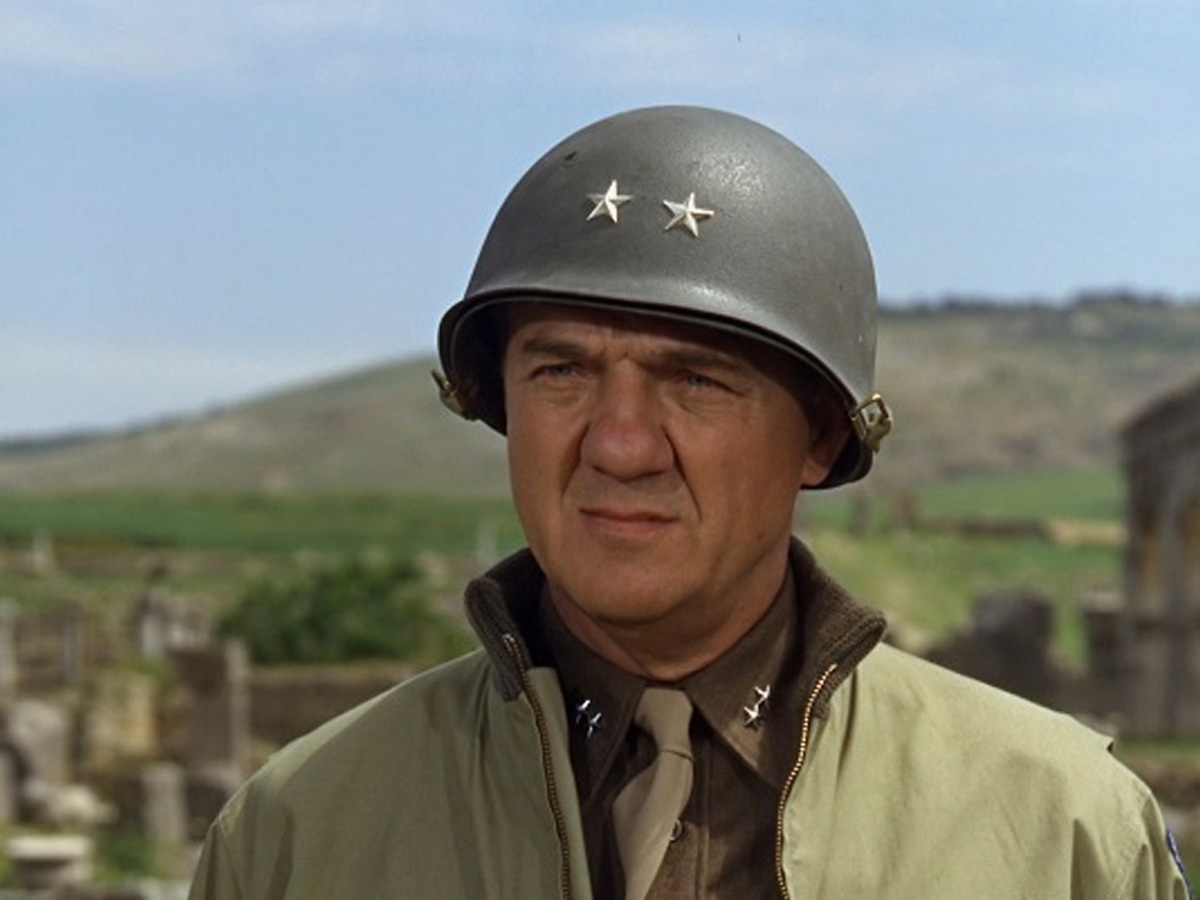
- War Depicted: World War II
- Director: Franklin J. Schaffner
- Actors: George C. Scott, Karl Malden, Michael Bates
Patton is a compelling portrayal of General George S. Patton, one of the most controversial and flamboyant figures of World War II. The film is anchored by George C. Scott's Oscar-winning performance, which is widely regarded as one of the greatest in cinematic history. Notably, Scott famously refused the Oscar, making him the first actor to do so. The movie opens with an iconic monologue in front of a massive American flag, perhaps the most historically recognizable of the film. Patton won seven Academy Awards, including Best Picture, Best Director, and Best Original Screenplay, solidifying its status in U.S. film canon. The film's attention to historical detail, combined with its exploration of Patton's complex personality, makes it a must-watch for anyone interested in war films or military history.
Inglourious Basterds (2009)

- War Depicted: World War II
- Director: Quentin Tarantino
- Actors: Brad Pitt, Christoph Waltz, Michael Fassbender
Inglourious Basterds stands out from other war films due to its audacious blend of historical revisionism and dark humor. The film features an ensemble cast, including Brad Pitt, Christoph Waltz, and Mélanie Laurent. Waltz won his first Academy Award for Best Supporting Actor in the role of Colonel Hans Landa. The movie's narrative is divided into five chapters, each contributing to a larger, interconnected story that culminates in a fictional assassination plot against Nazi leaders. Tarantino's quitessential dialogue writing is on display with multiple well-performed monologues. Inglourious Basterds challenges traditional war movie tropes by blending genres and rewriting history.
Hacksaw Ridge (2016)
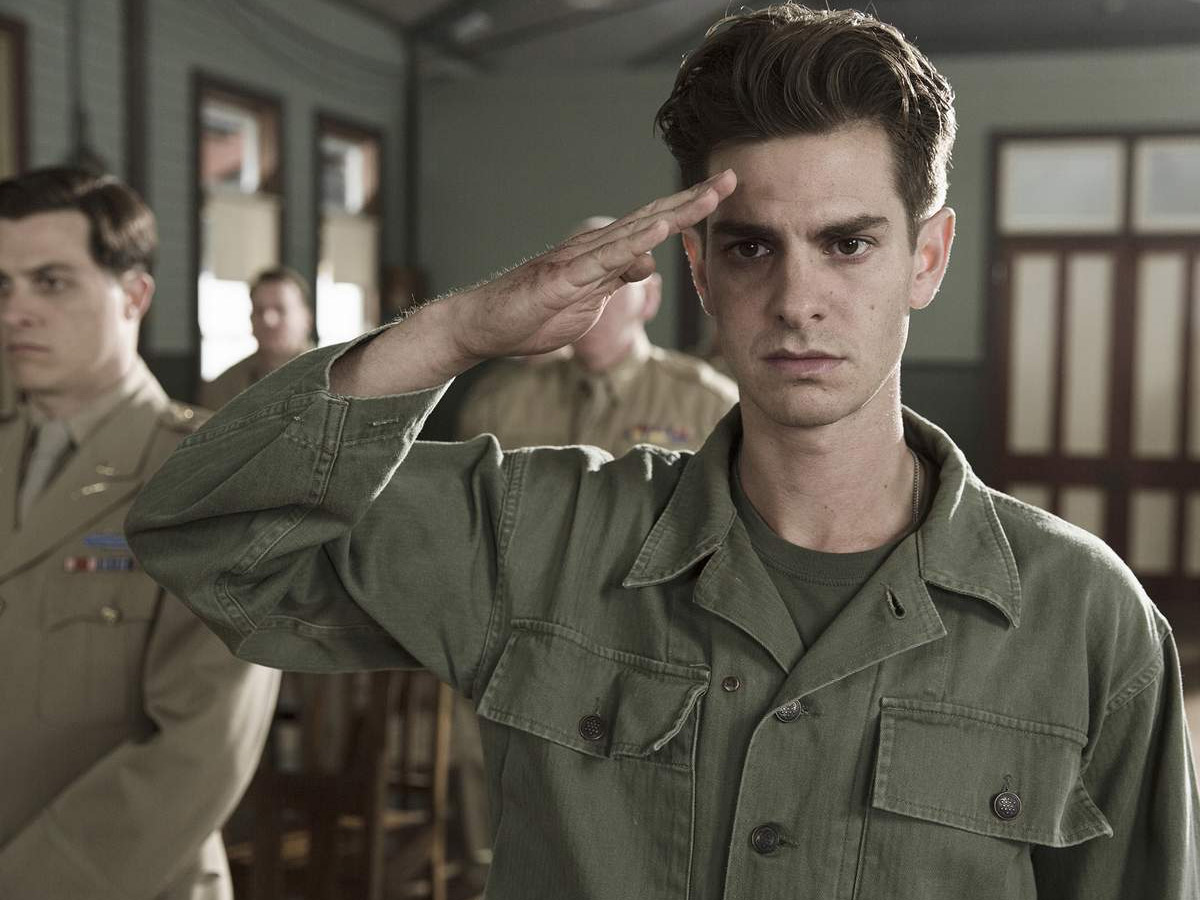
- War Depicted: World War II
- Director: Mel Gibson
- Actors: Andrew Garfield, Sam Worthington, Luke Bracey
Hacksaw Ridge is a biographical war film that tells the true story of Desmond Doss who was a conscientious objector who served as a medic during World War II. Doss, portrayed by Andrew Garfield, became the first man in American history to receive the Medal of Honor without firing a single shot by saving 75 men during the Battle of Okinawa. The film is notable for its intense and realistic battle scenes, which were praised for their authenticity and attention to detail. It also highlights the moral and ethical dilemmas faced by soldiers, offering a unique perspective on war through the lens of a pacifist. The movie received six Academy Award nominations, including Best Picture and Best Director, and won two Oscars for Best Film Editing and Best Sound Mixing.
Letters From Iwo Jima (2006)
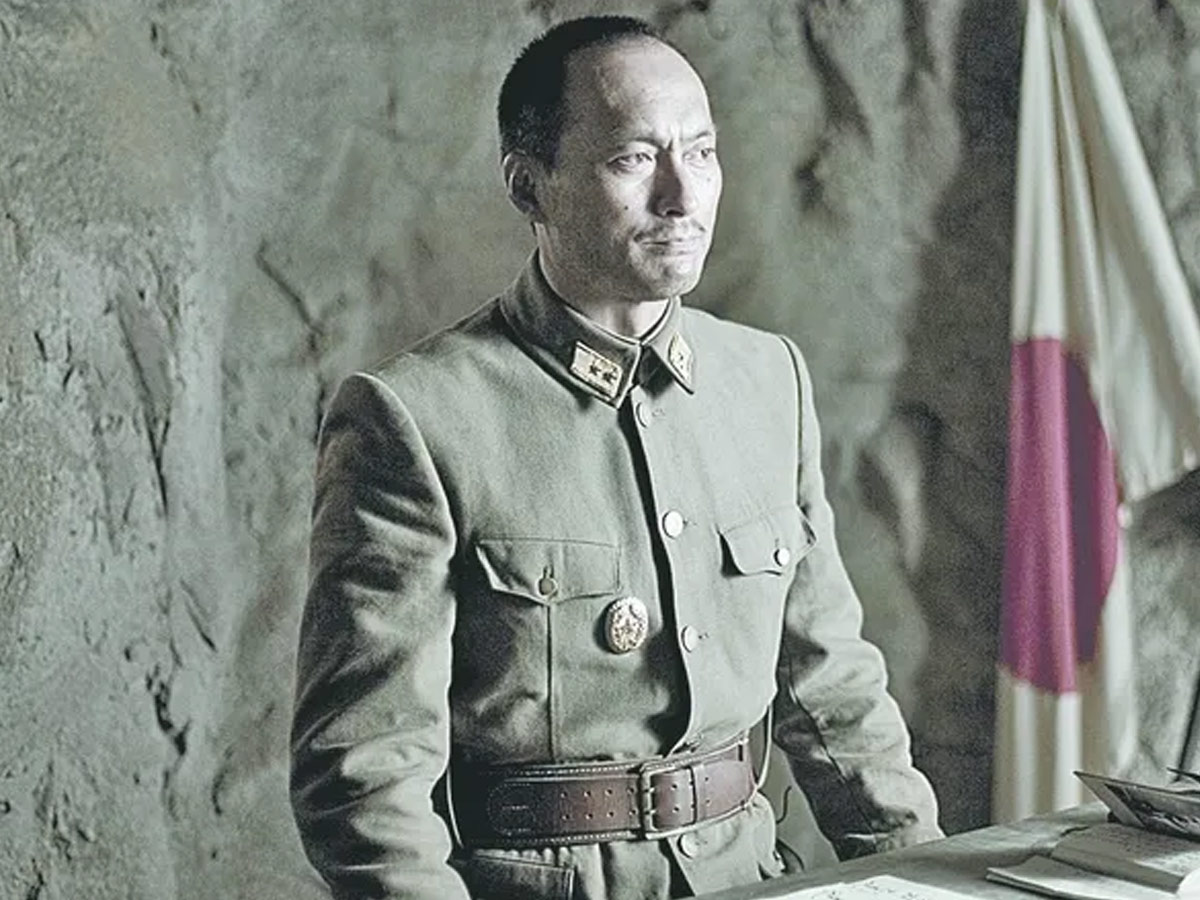
- War Depicted: World War II
- Director: Clint Eastwood
- Actors: Ken Watanabe, Kazunari Ninomiya, Tsuyoshi Ihara
Letters from Iwo Jima stands out as a remarkable war film for several reasons. It offers a unique perspective by depicting the Battle of Iwo Jima from the Japanese viewpoint, a rarity in Western cinema. The film is based on actual letters written by Japanese soldiers, providing an authentic and deeply personal narrative. It was shot almost entirely in Japanese, adding to its authenticity and cultural depth. The film earned four Academy Award nominations, including Best Picture and Best Director, and won the award for Best Sound Editing. Its companion film, Flags of Our Fathers tells the American side of the battle and was released the same year. The two films are a dual exploration of the conflict.
Glory (1989)
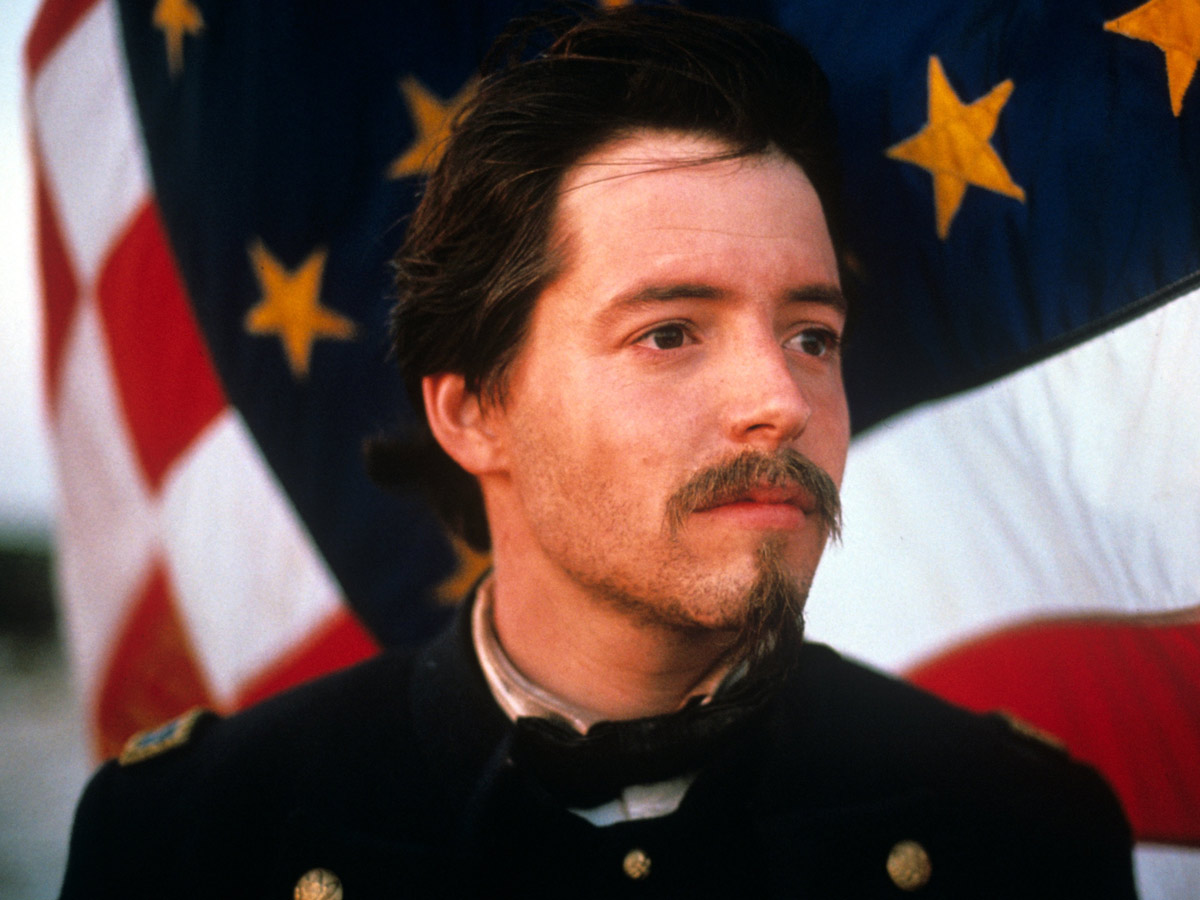
- War Depicted: American Civil War
- Director: Edward Zwick
- Actors: Matthew Broderick, Denzel Washington, Morgan Freeman
Glory is a historically significant film that portrays the true story of the 54th Massachusetts Infantry Regiment, one of the first African-American units in the Civil War. Directed by Edward Zwick, the movie features powerful performances by Matthew Broderick, Denzel Washington, Morgan Freeman, and Cary Elwes. Denzel Washington's role earned him an Academy Award for Best Supporting Actor. Glory also won Oscars for Best Cinematography and Best Sound, underscoring its technical excellence. The film addresses themes of courage, sacrifice, and the fight for equality, giving it a unique place on this list.
Dunkirk (2017)
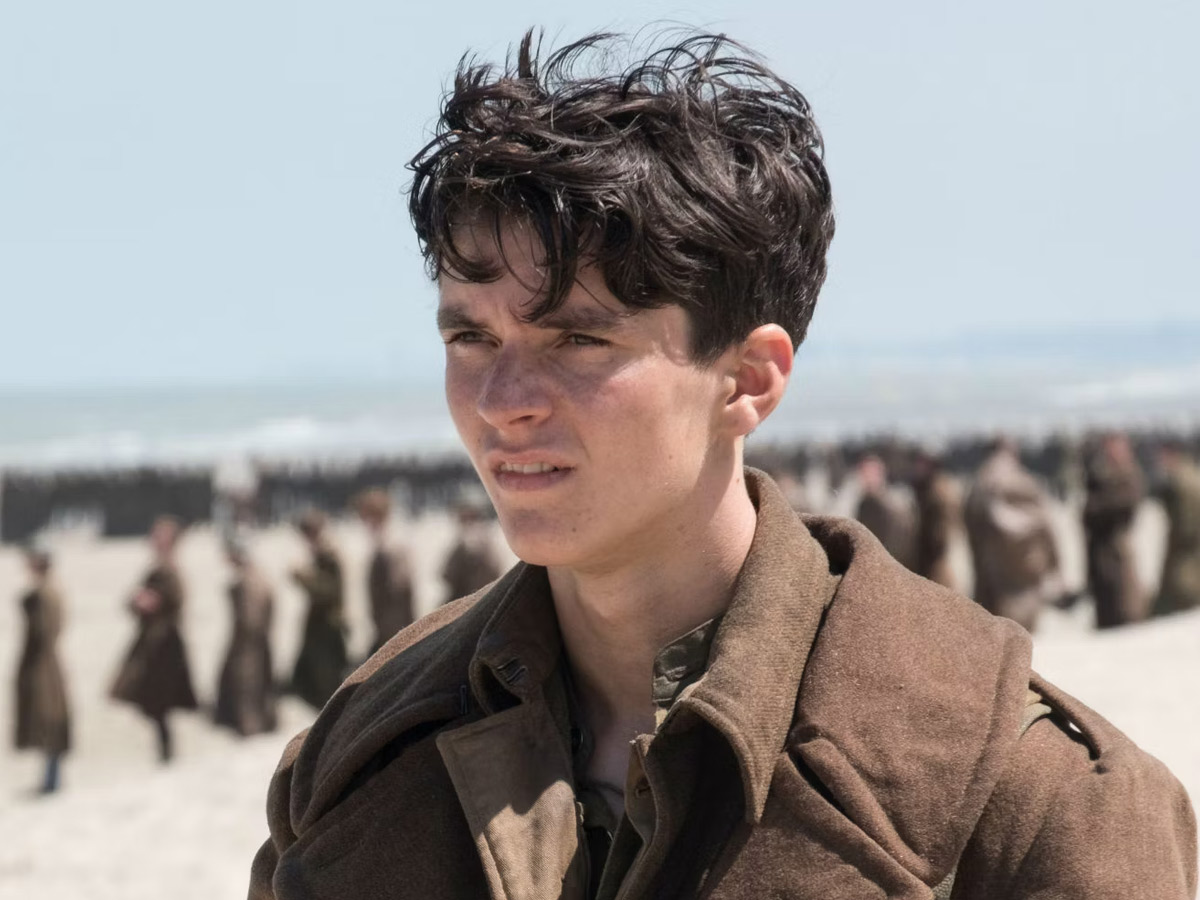
- War Depicted: World War II
- Director: Christopher Nolan
- Actors: Fionn Whitehead, Tom Glynn-Carney, Jack Lowden
Dunkirk stands out as a remarkable war film due to its innovative narrative structure and technical achievements. The film employs a non-linear timeline, interweaving three perspectives—land, sea, and air—each with different time spans, creating a tense and immersive experience. Shot on IMAX cameras, Dunkirk offers stunning visuals and an unprecedented sense of realism. The minimal use of CGI and reliance on practical effects, including real ships and planes, enhances its authenticity. The movie's focus on survival and the human spirit, rather than traditional combat scenes, provides a fresh take on the war genre. The film received critical acclaim, earning eight Academy Award nominations and winning three, including Best Editing, Best Sound Mixing, and Best Sound Editing.
Black Hawk Down (2001)

- War Depicted: Battle of Mogadishu
- Director: Ridley Scott
- Actors: Josh Hartnett, Ewan McGregor, Tom Sizemore
Black Hawk Down is based on the true events of the 1993 Battle of Mogadishu. The film is adapted from Mark Bowden's non-fiction book of the same name, which meticulously details the harrowing mission. It features an ensemble cast including Josh Hartnett, Ewan McGregor, and Eric Bana. The movie's realistic portrayal of combat was achieved through extensive collaboration with military advisors and the use of actual military equipment, including Black Hawk helicopters. The film's intense, immersive battle scenes were shot using a combination of practical effects and innovative cinematography, earning it two Academy Awards for Best Film Editing and Best Sound.
The Thin Red Line (1998)
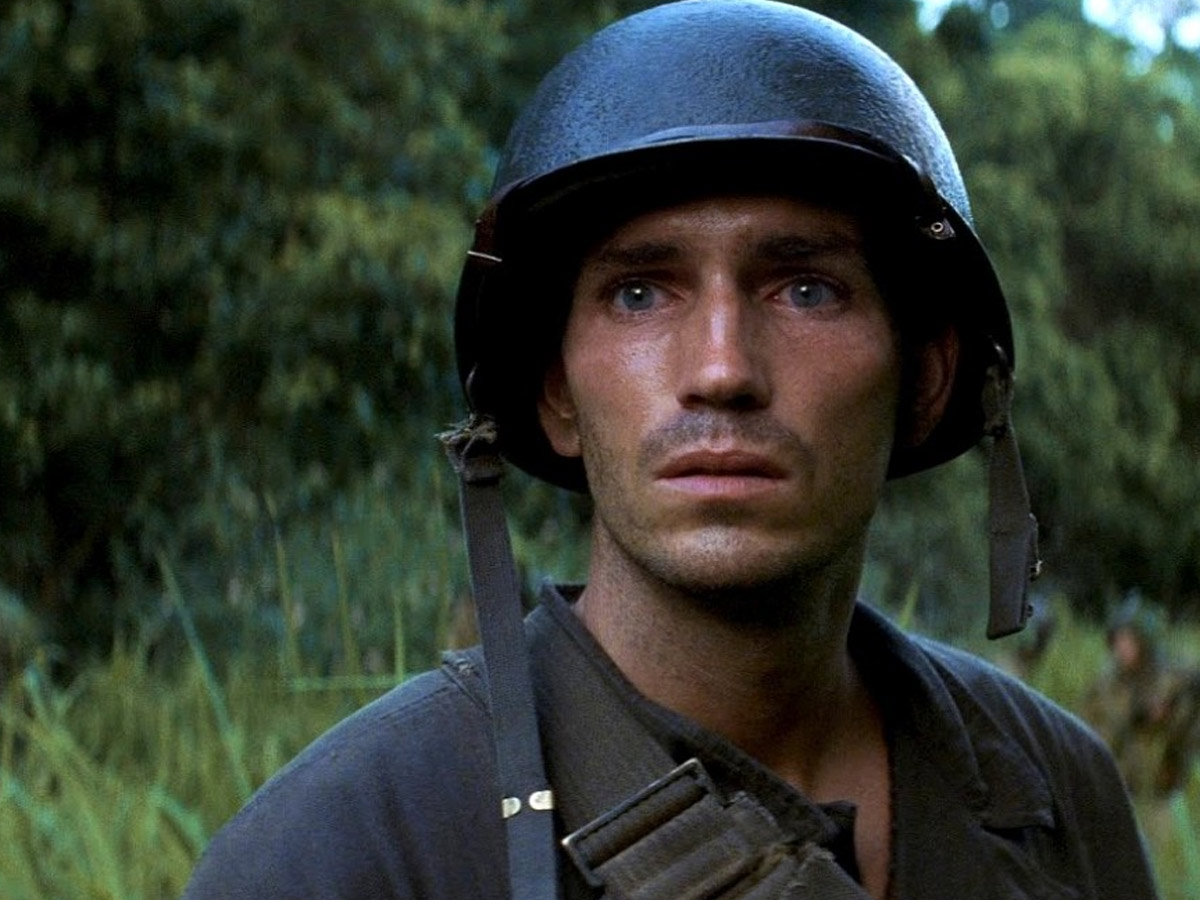
- War Depicted: World War II
- Director: Terrence Malick
- Actors: Sean Penn, Adrien Brody, Jim Caviezel
The Thin Red Line (1998) stands out as a unique war film due to its philosophical depth and visual artistry. Adapted from James Jones's 1962 novel, the film explores the Battle of Guadalcanal during World War II. It focuses on the internal struggles of soldiers rather than just the external conflict. The ensemble cast includes Sean Penn, Jim Caviezel, Nick Nolte, and John Travolta, among others. The film's cinematography, by John Toll, captures the stark beauty and brutality of war, earning an Academy Award nomination. Unlike typical war movies, "The Thin Red Line" delves into existential themes, questioning the nature of war and humanity. Its meditative pace and introspective narrative set it apart, making it a thought-provoking addition to the genre. The film received critical acclaim, securing seven Academy Award nominations, including Best Picture and Best Director.
The Deer Hunter (1978)

- War Depicted: Vietnam War
- Director: Michael Cimino
- Actors: Robert De Niro, Christopher Walken, John Cazale
The Deer Hunter is a film notable for its portrayal of the psychological impact of the Vietnam War on American soldiers. The film features a stellar cast, including Robert De Niro, Christopher Walken, and Meryl Streep. Walken won an Academy Award for Best Supporting Actor for his performance. Overall, The Deer Hunter won five Academy Awards, including Best Picture and Best Director, and was selected for preservation in the United States National Film Registry by the Library of Congress.
Paths of Glory (1957)
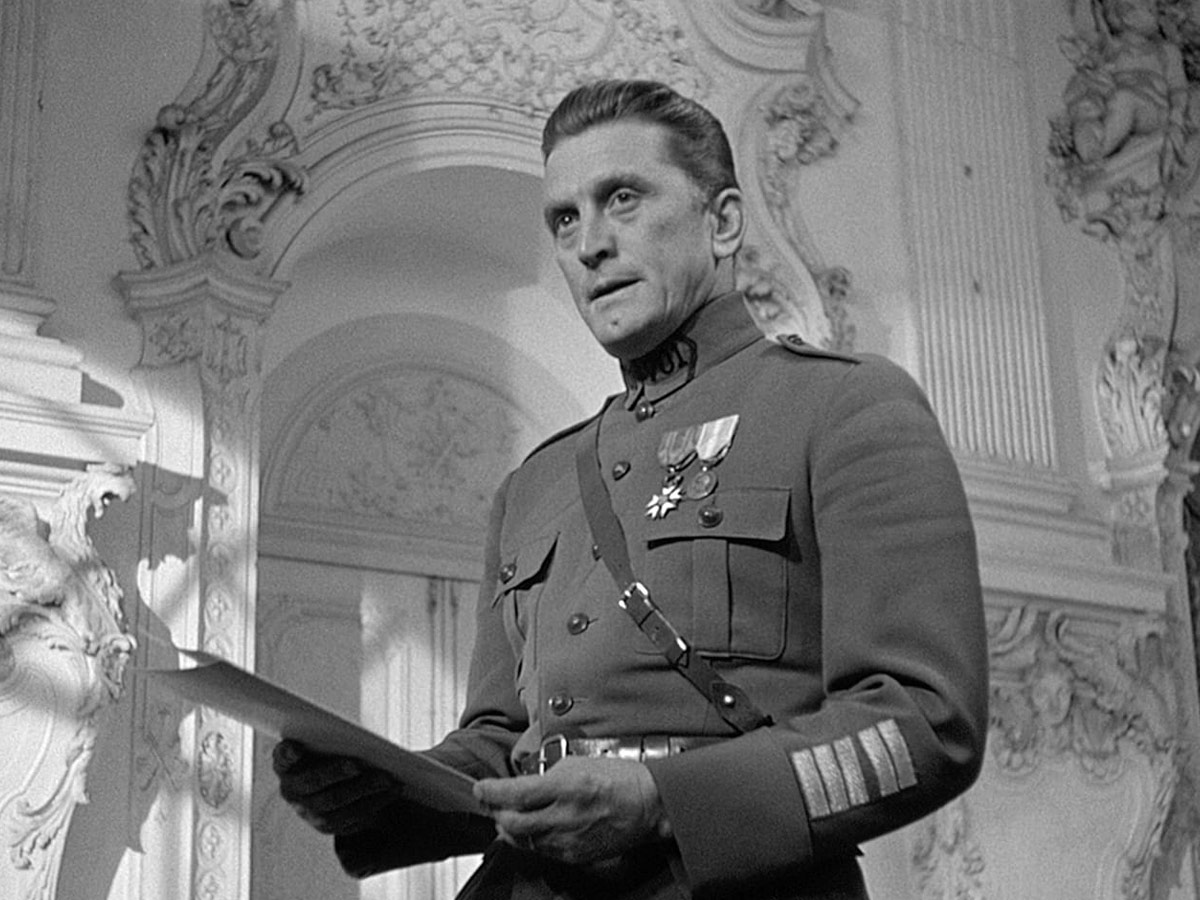
- War Depicted: World War I
- Director: Stanley Kubrick
- Actors: Kirk Douglas, Ralph Meeker, Adolphe Menjou
Paths of Glory is a war film that stands out for its stark anti-war message and its unflinching portrayal of the futility and brutality of war. The film is based on Humphrey Cobb's novel and is set during World War I. It focuses on the French army's disastrous attempt to capture a German-held position. Kirk Douglas delivers a powerful performance as Colonel Dax, a role that cemented his status as a leading actor of his generation. The film's meticulous attention to detail, including its realistic trench warfare depiction, was groundbreaking for its time. Paths of Glory was also notable for its innovative use of tracking shots. Despite initial controversy and being banned in France for its critical portrayal of the French military, the film has since been lauded for its bold storytelling and moral complexity.
1917 (2019)
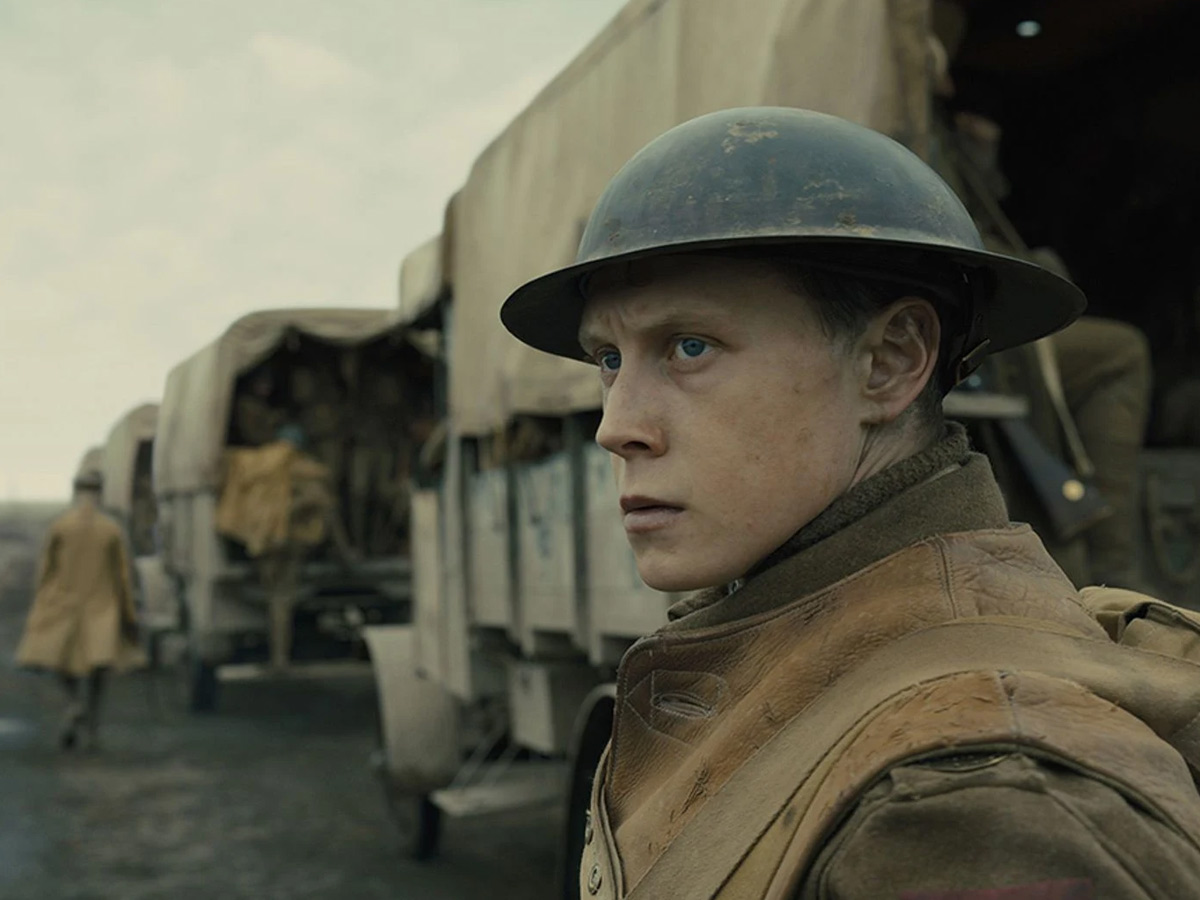
- War Depicted: World War I
- Director: Sam Mendes
- Actors: George MacKay, Dean-Charles Chapman, Mark Strong
1917 stands out as a remarkable war film due to its innovative storytelling and technical achievements. The movie is renowned for its "one continuous shot" technique, crafted by cinematographer Roger Deakins, which immerses viewers in the relentless tension and urgency of trench warfare during World War I. The film is inspired by stories told to Mendes by his grandfather, Alfred Mendes, who served as a messenger during the war. The production involved extensive research and collaboration with historians to accurately depict the period's details, from the trenches to the uniforms. 1917 received widespread critical acclaim, winning three Academy Awards, including Best Cinematography, and was praised for its realistic portrayal of war.
Lawrence of Arabia (1962)

- War Depicted: World War I
- Director: David Lean
- Actors: Peter O'Toole, Alec Guinness, Anthony Quinn
Lawrence of Arabia is a cinematic masterpiece directed by David Lean, renowned for its epic scale and stunning cinematography. The film is based on the life of T.E. Lawrence and his role in the Arab Revolt during World War I. It features Peter O'Toole in a career-defining performance as Lawrence, supported by an exceptional cast including Alec Guinness, Anthony Quinn, and Omar Sharif. The movie was shot in some of the most challenging and breathtaking locations, including the deserts of Jordan and Morocco. It won seven Academy Awards, including Best Picture and Best Director, and is often praised for its screenplay by Robert Bolt and Michael Wilson, which delves deeply into the complexities of Lawrence's character and the political intricacies of the time.
Platoon (1986)

- War Depicted: Vietnam War
- Director: Oliver Stone
- Actors: Charlie Sheen, Tom Berenger, Willem Dafoe
Platoon is a seminal war film that draws heavily from Stone's own experiences as a soldier in the Vietnam War. The film was the first to be written and directed by a Vietnam veteran, providing a raw and unfiltered perspective on the conflict. It won four Academy Awards, including Best Picture and Best Director, and was praised for its realistic portrayal of combat and the psychological toll on soldiers. The cast, featuring Charlie Sheen, Willem Dafoe, and Tom Berenger, underwent a grueling two-week boot camp to prepare for their roles. The film's critical and commercial success helped to shift public perception of the Vietnam War and has since been preserved in the National Film Registry for its cultural, historical, and aesthetic significance.
Full Metal Jacket (1987)
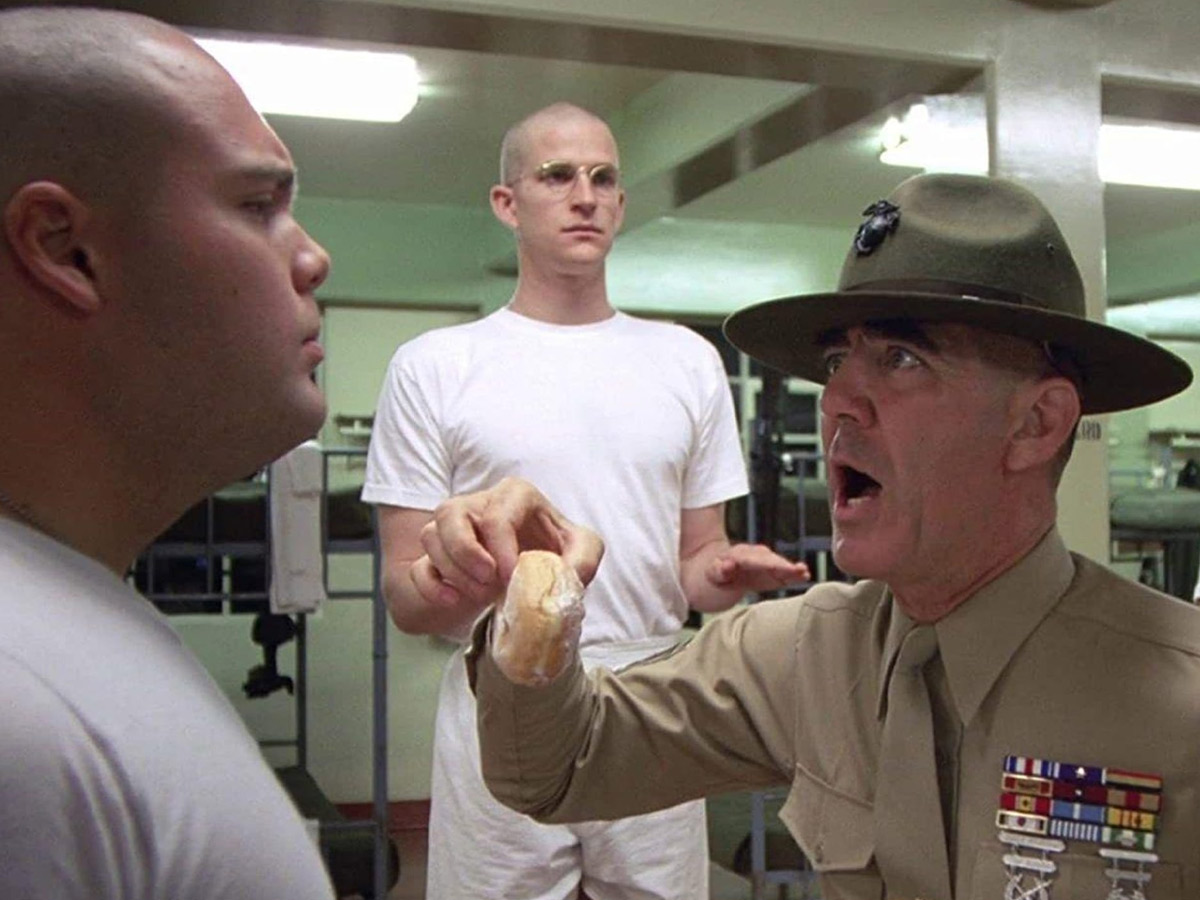
- War Depicted: Vietnam War
- Director: Stanley Kubrick
- Actors: Matthew Modine, R. Lee Ermey, Vincent D'Onofrio
Full Metal Jacket is widely regarded as one of the greatest war movies due to its unflinching portrayal of the Vietnam War and the psychological effects of combat. The film is based on the novel The Short-Timers by Gustav Hasford and features a screenplay co-written by Kubrick, Hasford, and Michael Herr. It is notable for its two-part structure, with the first half focusing on the brutal training of Marine recruits under the tyrannical Gunnery Sergeant Hartman, played by R. Lee Ermey. He was a real-life former Marine drill instructor who improvised much of his dialogue. The second half shifts to the war-torn streets of Hue during the Tet Offensive, capturing the chaos and moral ambiguity of the conflict. Full Metal Jacket is also distinguished by its haunting soundtrack, which juxtaposes period-appropriate rock music with an eerie score by Vivian Kubrick.
The Bridge on the River Kwai (1957)
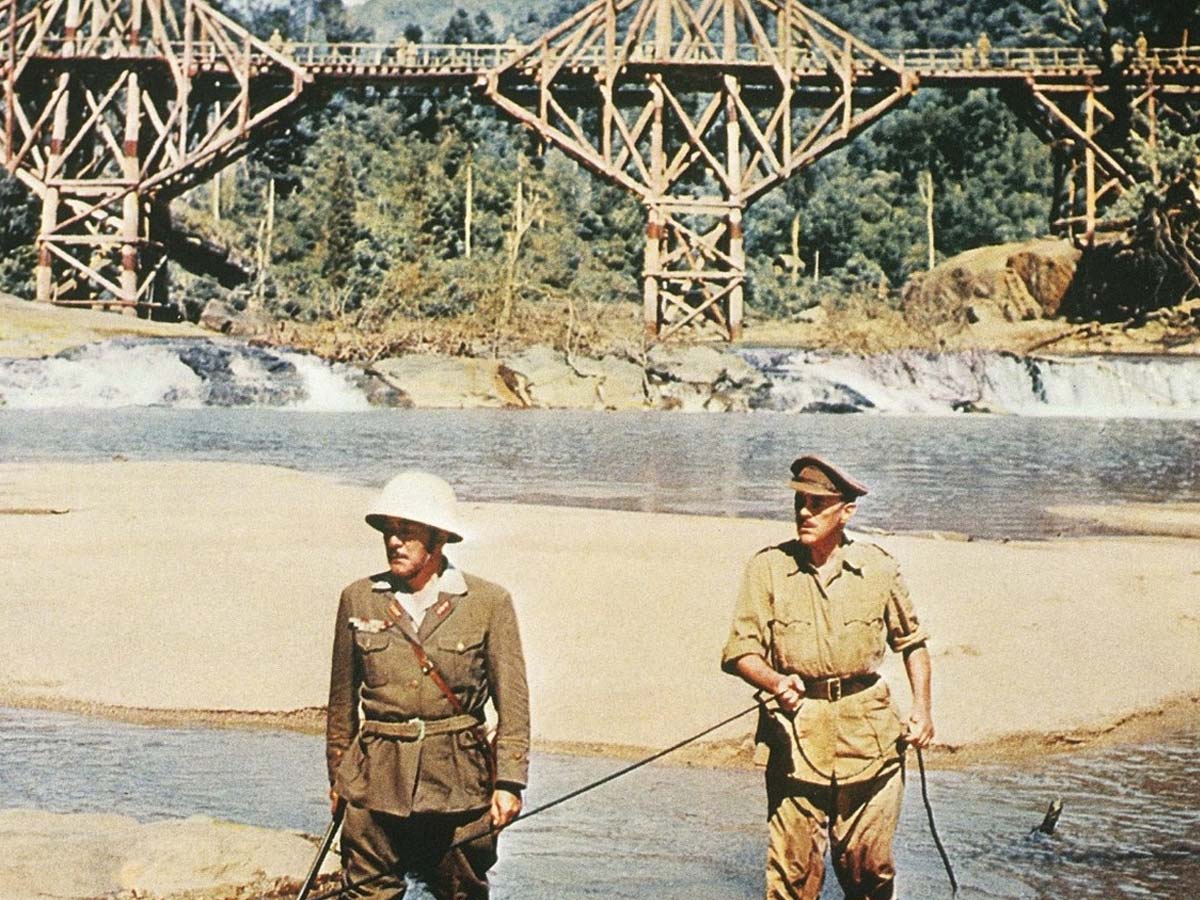
- War Depicted: World War II
- Director: David Lean
- Actors: William Holden, Alec Guinness, Jack Hawkins
The Bridge on the River Kwai is a critically acclaimed war film directed by David Lean, based on the novel by Pierre Boulle. It won seven Academy Awards, including Best Picture, Best Director, and Best Actor for Alec Guinness. The film is set during World War II and tells the story of British prisoners of war who were forced to build a railway bridge for their Japanese captors. The movie's production was notable for its use of real locations in Sri Lanka and the construction of an actual bridge, which was destroyed in the film's climactic scene. The score, featuring the iconic "Colonel Bogey March," became instantly recognizable in pop culture.
Schindler's List (1993)

- War Depicted: World War II
- Director: Steven Spielberg
- Actors: Liam Neeson, Ben Kingsley, Ralph Fiennes
Schindler's List is a cinematic masterpiece based on the true story of Oskar Schindler. He was a German businessman who saved over 1,100 Jews during the Holocaust by employing them in his factories. It was shot in black and white, which not only evokes the period but also adds a stark, haunting quality to the narrative. The film won seven Academy Awards, including Best Picture and Best Director. The performances, particularly by Liam Neeson, Ben Kingsley, and Ralph Fiennes, are widely acclaimed, with Fiennes' portrayal of the sadistic Nazi officer Amon Goeth being particularly chilling. Schindler's List is not just a war movie; it is a profound exploration of humanity, morality, and the capacity for both good and evil.
Saving Private Ryan (1998)

- War Depicted: World War II
- Director: Steven Spielberg
- Actors: Tom Hanks, Matt Damon, Tom Sizemore
Saving Private Ryan is renowned for its realistic portrayal of World War II, particularly the D-Day invasion of Normandy. The film's opening 27-minute sequence is often cited as one of the most harrowing and accurate depictions of combat ever put to film. The film earned Spielberg an Academy Award for Best Director. The movie's attention to detail extended to the use of authentic period weaponry and tactics, with military historian Stephen E. Ambrose serving as a consultant. In one of the great upsets at the Academy Awards, the film surprisingly did not win Best Picture. The honor went to Shakespeare in Love instead.
Apocalypse Now (1979)
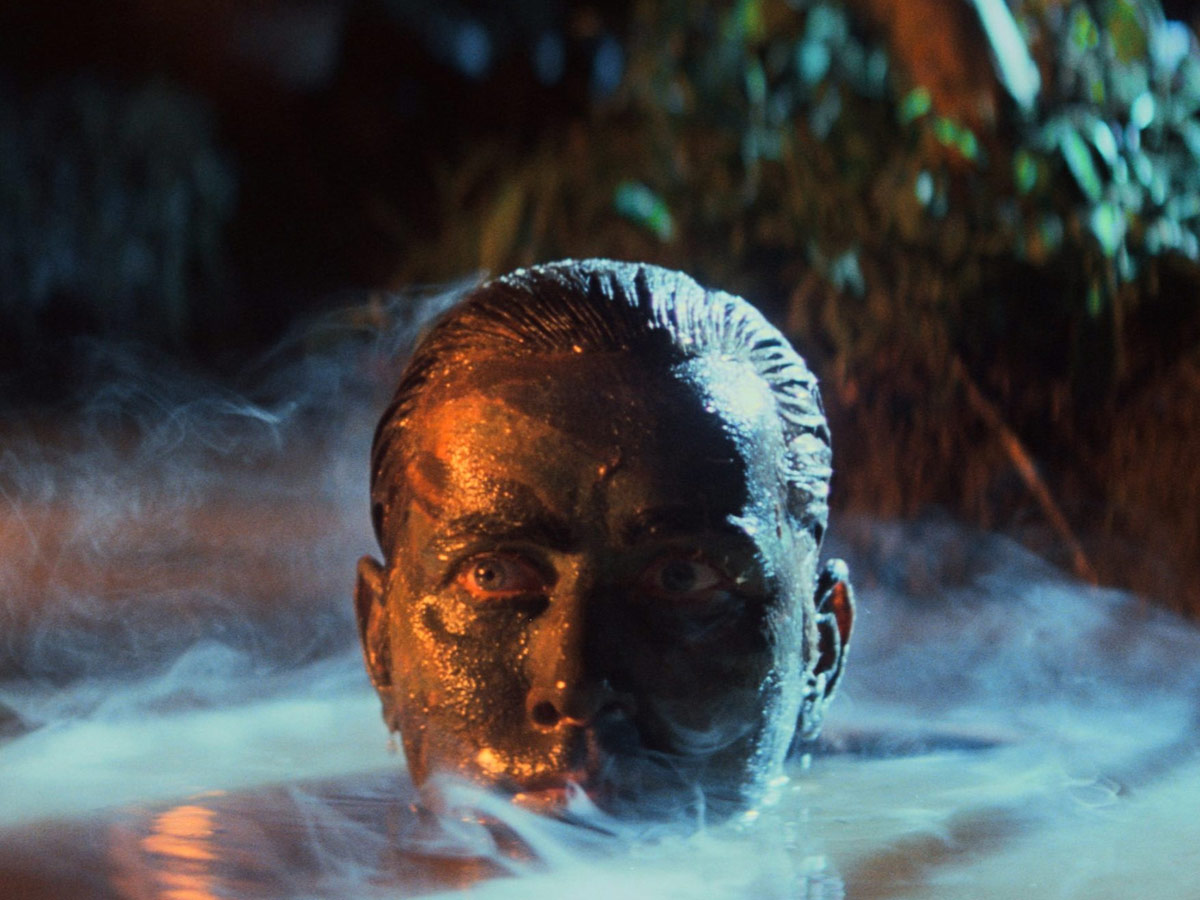
- War Depicted: Vietnam War
- Director: Francis Ford Coppola
- Actors: Martin Sheen, Marlon Brando, Robert Duvall
Apocalypse Now is widely regarded as one of the greatest war movies ever madee. The film is an adaptation of Joseph Conrad's novella Heart of Darkness, transposed to the Vietnam War. It explores the psychological horrors of combat and the darkness within human nature. The production itself was notoriously challenging, with a shoot that lasted over a year in the Philippines that was plagued by natural disasters, health issues, and budget overruns. The film's use of Wagner's "Ride of the Valkyries" during the helicopter assault scene has become one of the most famouse scenes in cinema. Apocalypse Now won the Palme d'Or at the Cannes Film Festival and was nominated for eight Academy Awards..
 Author
Ron Winkler
Last Updated: September 30, 2025
Author
Ron Winkler
Last Updated: September 30, 2025